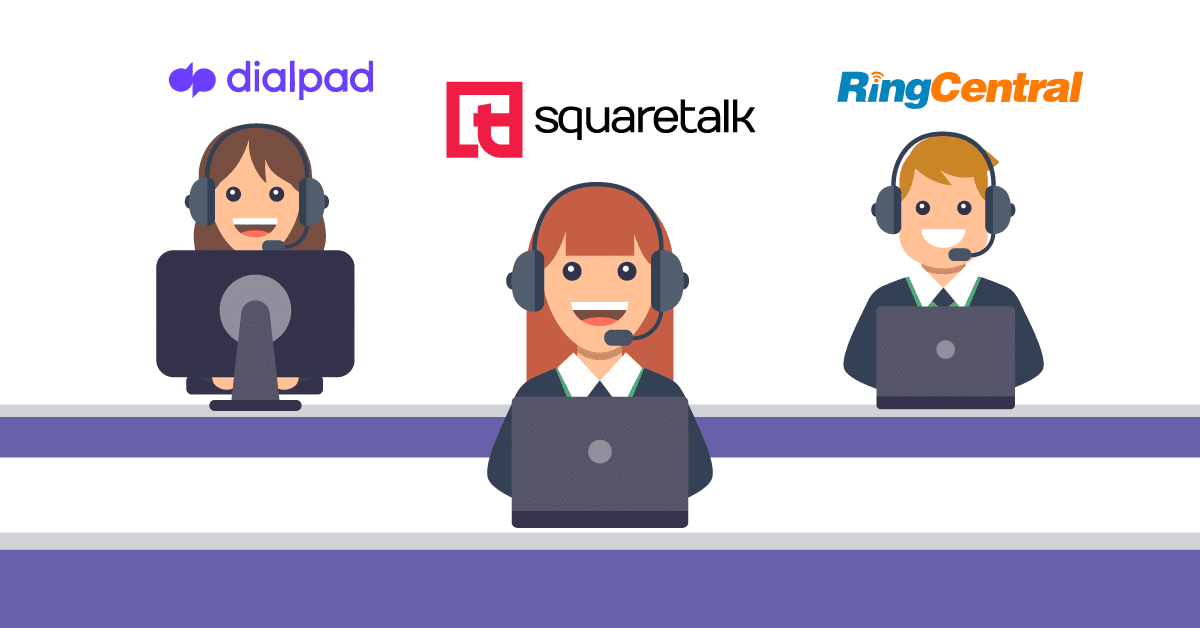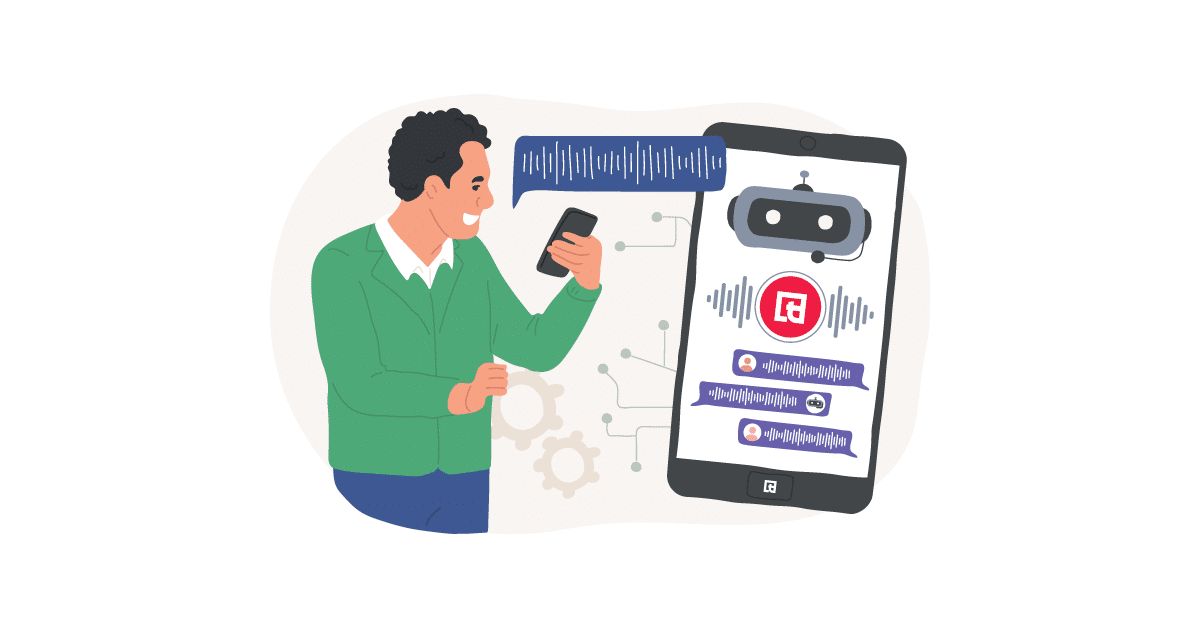Every call to your call center generates a wealth of information – customer data, call details, client feedback, customer satisfaction scores, and more.
If you can collect, measure, and analyze this data, you’ll understand customer needs, measure agent performance, and streamline daily operations.
The result?
Low operational costs, happier customers, and more opportunities to strengthen your brand and boost revenue.
Today, businesses worldwide are leveraging advanced analytics to improve key call center KPIs like Average Handle Time, Customer Satisfaction Score, and Call First Resolution.
In fact, 91.9% of organizations achieved measurable value from data and analytics investments in 2023.
In this article, you’ll learn what contact center analytics is, its types and importance, and how to utilize its full potential to stay ahead of the competition.
Let’s dive in.
What are Contact Center Analytics?
Contact center analytics involves capturing, processing, and analyzing data from various customer interactions.
You can utilize data from a variety of sources and communication channels, such as:
- Call and video recordings
- Voice call transcriptions
- IVR systems
- CRM systems
- Chat transcripts
- Emails
- SMS and messaging apps
- Speech analytics
- Customer surveys
- Event logs
- Social media platforms
- Real-time call monitoring
Contact center analytics uncovers insights about what customers need, how agents are performing, and which areas need strategic focus, so you can make data-driven decisions.
Types of Contact Center Analytics
Every contact center analytics data point offers a unique look into different parts of your operation—from how your teams perform to how your customers interact with you.
Identifying the most valuable metrics helps you run a more efficient operation and provide an exceptional customer experience.
Let’s break down six key categories of contact center analytics and why they matter.
1. Interaction Analytics
Interaction analytics capture both real-time and historical data from calls, chats, and other customer interactions. They focus on channel-specific metrics like contact volume, response times, hold times, abandonment rates, escalation and transfer rates, and resolution time.
According to a report, the use of interaction analytics in contact centers markedly increased in 2023, with 37.5% of operators adopting the technology.
Key Benefits:
- Spotting Trends and Bottlenecks: By highlighting recurring issues and slowdowns, you can take immediate action to streamline processes.
- Setting Clear Performance Goals: Data-driven insights make it easier to establish benchmarks and track improvements over time.
2. Speech and Text Analytics
Speech and text analytics software automatically analyzes call recordings, emails, and chat transcripts. Using AI and machine learning, it identifies keywords, customer pain points, sentiment, and compliance-related phrases.
Key Benefits:
- Improved Scripts and Training: You’ll uncover which words or phrases are most effective in problem resolution and sales interactions, identify triggers for negative customer reactions, and flag high-risk statements. This helps you refine scripts based on customer emotions, intent, and urgency in real time and better coach agents.
- Enhanced Customer Experience: By gauging sentiment, you can quickly address dissatisfaction and adapt strategies to keep customers and prospects happy.
3. Predictive Analytics
Companies that implement predictive analytics in customer support report a 25% improvement in customer satisfaction and a 30% reduction in churn.
Through machine learning and statistical models, predictive analytics use historical data to forecast future outcomes, such as call volumes, customer churn risks, customer behaviors, and staffing requirements.
In sales, past engagement data helps you pinpoint the best times to contact prospects per channel, improve lead prioritization, and identify existing customers with a high probability of purchasing additional products or services.
Key Benefits:
- Proactive Resource Planning: Accurate forecasts ensure you have the right number of agents on deck to handle peak periods. This prevents long wait times and provides seamless customer experiences across all channels while optimizing operational costs.
- Better Crisis Management: Predicting potential customer issues before they arise, like system outages, product complaints, payment problems, or delivery delays, allows you to provide solutions early and maintain customer satisfaction.
4. Business Intelligence
Business intelligence (BI) consolidates data—such as revenue figures, customer lifetime value, churn risks, and contact center performance metrics—to offer strategic insights. It often involves dashboards or reports that provide high-level analysis.
Key Benefits:
- More Data-Driven Decisions: With a clear view of customer trends, agent performance, and financial metrics, you can optimize effective marketing campaigns, personalize outreach, and improve product or service rollouts.
- Prioritization of High-Value Customers: BI lets you segment customers by revenue potential or churn risk, ensuring you focus your best resources where they’ll have the biggest impact (e.g., retention efforts, VIP service, sales prioritization).
5. Customer Journey Analytics
Also known as cross-channel analytics, this type of analytics monitors a customer’s path across various touchpoints—websites, phone calls, email, social media, self-service portals, and live chat. It provides a complete view of how people interact with your brand, finding patterns, preferences, and potential pain points.
Key Benefits:
- Identifying Friction Points: By analyzing where customers drop off, escalate issues, or repeat interactions, you can uncover bottlenecks, inefficient workflows, and frustrating interactions to create a more seamless experience.
- Delivering Consistent Omnichannel Service: Unifying insights allows you to provide high-quality interactions across all touchpoints. This ensures smooth handoffs, personalized engagement, and a frictionless customer journey.
6. Agent Performance Analytics
Agent performance analytics provides a data-driven breakdown of each agent’s productivity, identifying areas where they shine or struggle. It measures key metrics like average handle times (AHT), first-call resolution rates, customer satisfaction ratings (CSAT), conversion rates, and script adherence.
Key Benefits:
- Personalized Training and Coaching: Identifying where agents excel and where they need support allows you to provide targeted feedback and skill-building opportunities.
- Top Performers Recognition and Retention: Performance data can help you recognize high achievers, incentivize continuous improvement, and boost agent experience.
Benefits of Contact Center Analytics
Understanding the advantages of contact center analytics is essential for businesses looking to elevate their customer experience and streamline operations.
Let’s take a closer look at how it benefits your operations across five essential areas.
1. Measurable Performance
Contact center analytics helps you move from guesswork to data-based optimization.
You can set specific goals and create a culture of accountability where everyone knows what success looks like and business progress is easier to measure. By monitoring key metrics like average call duration, first-call resolution rates, and agent utilization, your operation can grow and adapt strategically, rather than reacting on the fly.
2. Key Customer Insights
Detailed insights into customer behavior, preferences, and pain points help you deliver a better customer experience in support and sales.
Analytics reveal patterns—like customers struggling with a specific step in your sales process, or certain products generating more queries than others.
Over time, these insights help you adapt your offerings, enhance services, and earn loyal customers who feel heard and understood.
3. Operational Efficiency and Cost Reduction
When your team is bogged down by repetitive queries, long interactions, or unnecessary call transfers, it doesn’t just impact customer satisfaction but also drains morale and raises operational costs. Contact center analytics highlight inefficient processes and practices
With that information, you can optimize your workflows, redistribute staff during peak hours, or optimize key features like your IVR system, for example.
The result? Lower operational costs, increased agent productivity, more satisfied customers, and data-based budget allocations.
4. Enhanced Customer Experience
The quality of each customer interaction can make or break your brand reputation. Analytics tools help you understand what customers want, where their frustrations lie, and how to tailor responses in a more empathetic way.
By acting on real-time feedback and historical data, your support contact center becomes a proactive problem-solver, elevating each interaction to a positive experience. Satisfied clients are more likely to remain loyal, recommend your services, and become brand advocates—all because you listened and responded effectively.
Historical customer data and behavioral insights can also help you personalize sales interactions, identify high-intent leads, and optimize strategies by identifying areas where agents may be too aggressive or ineffective.
5. Data-Driven Decision Making
More businesses are turning to data-driven decision-making, which has enhanced their operation’s productivity rate to 63%.
Relying on intuition alone can be risky, especially in a fast-paced contact center environment. With analytics, you can test ideas—like a new script or modified staffing plan—and see how they impact customer satisfaction, call volumes, and sales.
This constant feedback loop keeps you agile and aligned with your strategic goals.
Ultimately, when every decision is backed by data, you’re more likely to stay ahead of the competition, adapt to evolving customer needs, and create long-term success for your business.
Contact Center Analytics Best Practices
Contact center analytics can boost your contact centers’ performance, but to make them a vital part of your business intelligence, you need to implement them correctly.
Here are some top best practices to help you get the most out of your contact center analytics:
1. Use the Right Call Center Analytics Software
95% of businesses have had to manage unstructured data.
Investing in a user-friendly, robust analytics solution is crucial to converting your raw data into meaningful insights. If the platform is clunky or lacks essential features, your team will find it hard to extract meaningful insights.
With advanced contact center software, you can process large volumes of calls, texts, and emails, easily track campaign performance, monitor agent activities, and customize dashboards to suit your needs.
Also, read “7 Mistakes Companies Make when Choosing a Call Center Software.”
2. Leverage Call Monitoring and Scoring
Live call monitoring allows you to provide immediate feedback and coaching when agents need it most.
You can create a standardized evaluation process for how well agents adhere to brand messaging, sales scripts, and service protocols, with structured call scoring criteria (e.g., tone, issue resolution, upselling effectiveness).
This transparency creates trust among your staff, who understand how they’re being assessed. By observing live interactions you can also provide real-time coaching and detect potential regulatory compliance violations.
Over time, consistent monitoring and scoring reveal patterns that help you refine scripts, training materials, and customer service protocols.
3. Leverage Speech and Text Analytics
Automated transcription and keyword detection tools help you extract valuable insights from voice calls and written communications.
By analyzing phrases customers frequently use, you uncover hidden frustrations, call/chat patterns that lead to repeat customer inquiries, or even opportunities to upsell.
Analytics also highlight specific calls or messages for deeper review, which is invaluable for quality assurance. Identifying staff who deviate from best practices or are underperforming ensures consistent service quality.
Regularly revisiting summarized data lets you adapt your training, FAQs, and agent scripts to match evolving customer needs.
4. Train Agents
Analytics data spotlights why certain customer pain points keep cropping up. You can then tailor coaching to the real issues—like long hold times, mishandling of customer objections, or script missteps.
Conduct group workshops or one-on-one sessions, focusing on targeted solutions that empower agents to handle tricky situations more confidently.
This approach not only boosts performance but also makes agents feel supported and valued, creating a positive team culture.
5. Collect and Analyze Feedback
Setting up regular feedback loops—through surveys or post-interaction questionnaires—helps you monitor customer satisfaction. This will highlight experience gaps and unaddressed pain points.
Agent feedback, on the other hand, reveals internal hurdles, inefficient processes, or tech obstacles that slow work down.
Analyzing feedback in a consistent cycle (monthly, quarterly) ensures you catch emerging trends before they grow into bigger challenges. Acting on this information quickly fosters trust and shows stakeholders you’re genuinely listening to their opinions.
6. Track Contact Center Metrics
Diving into metrics like AHT, first-contact resolution, response time, and CSAT provides a snapshot of your team’s efficiency and effectiveness and a more data-driven optimization approach that will help you maintain service excellence without overwhelming agents.
Customize your dashboards to match your organizational goals, like increasing sales conversions or minimizing wait times. These measurements become benchmarks, guiding your decisions on staffing, training, and process improvements.
7. Consistently Review and Refine Strategies
Continuous improvement is key to staying ahead in a fast-paced environment. Schedule regular check-ins with agents, supervisors, and upper management to discuss analytics, brainstorm solutions, and tweak your approach.
This ongoing refinement keeps your operations agile and helps maintain high morale and service quality.
Use Squaretalk's Contact Center Analytics to Enhance the Customer Experience
Ready to supercharge your call center?
Squaretalk’s Contact Center Analytics combines powerful tools with an intuitive interface to help you deliver top-notch customer experiences every time.
Real-Time Reporting
This feature gives you a detailed, real-time, and customizable snapshot of your KPIs. You can see data sorted by call status, agent, campaign, lead list name, call type, etc.
The contact center platform has 80+ columns available for export.
Seamless Integrations
Using our off-the-shelf integrations or custom APIs, you can connect your favorite Customer Relationship Management (CRM) systems, helpdesk apps, and business tools to Squaretalk. This instantly unifies your tech stack, syncs workflows, and provides access to detailed data in one place. You can then better analyze your operational effectiveness and help agents personalize interactions, resolve inquiries faster, and close more deals.
Since data updates automatically, you’ll avoid the hassle of manual updates and keep everyone on the same page for smoother collaboration.
Final Thoughts
The strategic implementation of contact center analytics does more than improve metrics – it fundamentally reshapes how organizations respond to market dynamics and evolving customer needs.
You can better understand what drives or hinders client decisions and team performance by capturing insights across sales, support, and service interactions. Armed with these insights, your business can reduce costs, accelerate sales cycles, and boost customer loyalty.
Ready to tap into the power of contact center analytics?
Discover how Squaretalk’s features can boost your contact center’s performance.
Book a demo today!






